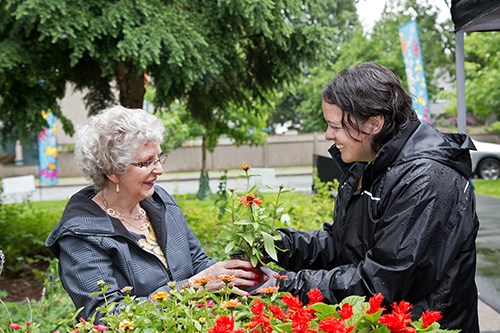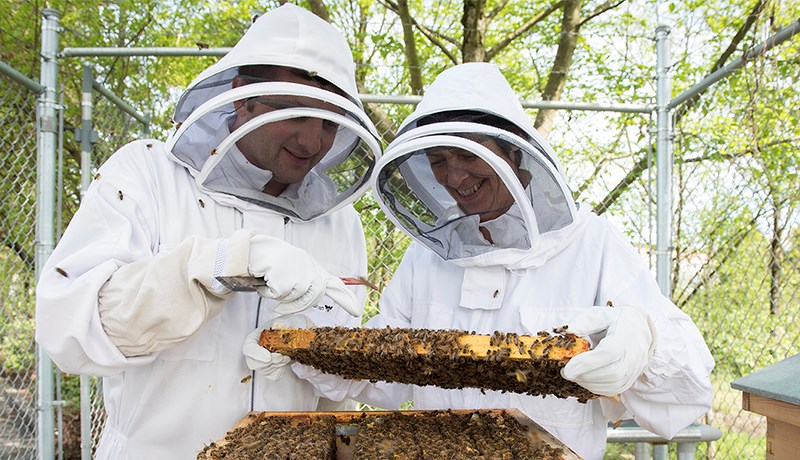The city of Coquitlam is hoping you'll get a bee in your bonnet about saving the little buzzers.
The world's pollinators are in distress with habitat loss, disease and other issues, but individual citizens' efforts could bring them back, says a city parks program co-ordinator.
“We’d like people to think about pollinators when they plant their gardens," said Jennifer Urbaniak. "There are lots of plants that both look good and attract pollinators, so why not choose plants that do double duty?”
Pollinator promotion isn’t new to Coquitlam; the Inspiration Garden has had a pollinator section since it opened in 2008, for example. But this year, the city is making an effort to increase pollinator plantings in both city and private gardens.
Demonstration plantings of pollinator-friendly gardens have been added throughout Coquitlam parks, including Town Centre, Blue Mountain, Mackin, Como Lake, Mundy and Leigh, with educational signs soon to be installed.
Public outreach officially kicked off June 10 with a Pollinator Party at Shiloh Park — the first of four events in city parks. The others are set for June 24 at Crestwood Park; July 8 at Dawes Hill Park; and a late-summer date for Good Neighbour Park. All events run 1 to 3 p.m. and feature hands-on demonstrations of pollinator plantings, a display with specimens, opportunities to ask questions plus crafts and activities.
The project also includes a pollinator display at the Coquitlam in Bloom tent at Coquitlam's Canada Day celebration in Town Centre Park, signs with pollinator facts that will pop up at local parks, information online, and a partnership with Plant Something BC, which is sending representatives to some of the events.
Urbaniak noted that a large garden isn’t required to provide food and shelter for pollinators — “Even a small balcony garden makes a difference."

PLANT SUGGESTIONS
Here are some tips for planting a pollinator-friendly garden:
• Choose a selection of plants that will bloom at different times throughout the year.
• Group pollinator-friendly plants together.
• Plant flowers of different colours, shapes and sizes.
• Never use insecticides, which have been banned in Coquitlam since 2012.
• Consider these flowering plants and shrubs: Alyssum, hyacinth, cosmos, geraniums, zinnia, beebalm, euphorbia, liatris, fuchsia, sage, canna, lavender, heather, mahonia and roses.
• Bee-favoured food or herb crops include thyme, chives, blueberries, raspberries and fruit trees.
BEES BY THE NUMBERS
• B.C. has at least 450 species of native bees — more than the number of bird species across Canada. Honeybees, however, are not a native species.
• Beetles pollinated the first flowers in the time of the dinosaurs.
• Butterflies prefer flowers with flat petals that act like a landing strip while hummingbirds like to gather nectar from long, tubular flowers.
• Tomatoes are best pollinated by bumblebees, which are better than other bees at “buzz pollination," a technique used by some bees to release pollen.
For more information and resources, visit www.coquitlam.ca/cib.
COMMUNITIES IN BLOOM
Coquitlam is preparing for the Communities in Bloom, a friendly competition between cities that promotes community pride, beautification and environmental responsibility. Coquitlam will compete at the international level this year, having won last year in the national over-50,000 population category and received a “5 blooms silver” rating. Judges will tour Coquitlam July 17 and 18 to assess the city on tidiness, environmental action, heritage conservation, urban forestry, landscape and floral displays.



